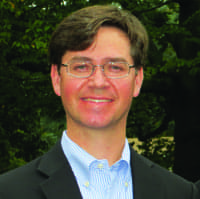 Success in reducing needle stick injuries lies in technologies that provide a systematic and effective solution.
Success in reducing needle stick injuries lies in technologies that provide a systematic and effective solution.
In recent years, and the past year in particular, the high rate of needle stick injuries among healthcare workers has attracted widespread media coverage.
A recent study of 60 large U.S. hospitals by the Centers for Disease Control found that healthcare workers endure almost 400,000 needle-stick injuries each year. A 1995 study estimated the number as high as 800,000. The 2000 study did not look at how many workers become infected due to their injuries, but every needle stick increases the chance of exposure to blood-borne viruses such as Hepatitis B and C and HIV.
Today this widespread yet largely preventable problem is being taken off the back burner of awareness and thrust into the spotlight of legislative action. Citizen and professional lobbying efforts have commanded the attention of state law makers who are writing and passing legislation at a furious pace. In April, West Virginia Governor Cecil H. Underwood and Minnesota Governor Jesse Ventura signed laws mandating the use of safety needle products. Federal regulations on the subject have been on the books for a number of years, but they do not apply to state and municipal workers. The first Occupational Safety and Health Administration (OSHA) regulation to restrict blood-borne pathogens in healthcare settings was written in 1993. In November 1999, the agency issued new compliance directives to enforce the use of available, approved and effective safety-engineered needles in virtually every healthcare facility in the United States. The new state mandates cover state and municipal healthcare workers not governed by OSHA. However, all these new laws won’t help unless technologies and methods of handling and destroying sharps are developed and used.
 |
 |
 |
MedPro Inc. of Lexington, Ky., has been in the business of developing safety solutions for almost a decade. Seven years was spent developing its initial product, the Needlyzer to market. It currently distributes or is developing technology that ranges from needle destruction devices (NDD), sharps protection engineered into the needle device [ESIP] and needleless IV systems. New technology on the company’s drawing board is targeted at assisting healthcare professionals reduce their risk of needle stick injury. As a by-product, several of these solutions also result in additional safety to the general public by eliminating sharps from the waste stream.
MedPro was originally developed to distribute the Needlyzer, an NDD that completely destroys a hypodermic needle to the hub in approximately one second. As a Class III PMA medical device, it has passed the FDA’s most stringent testing requirements for a product prior to market introduction.
Needle destruction works similar to an electric pencil sharpener with exactly the opposite effect. Just insert the needle into the aperture on top of the device, press down slightly, twist your wrist at the end and the needle is completely oxidized to the hub.
The six-pound Needlyzer Model ND2 is a mobile needle destruction device that oxidizes non-coated 16- to 30-gauge needles into a granular metallic powder immediately after use.
The needle is inserted into the aperture and guided between electrodes where a 2-volt current produces 1,500ÞC during the destruction process. This oxidizes the needle into a metallic ash of ferric, nickel and chromium oxides, known as swarf. Swarf collects in the red disposable cartridge on the front of the unit, which holds 3,000 to 5,000 oxidized needles, The capacity depends on the length and gauge of needles destroyed.
To assist with filtration during needle destruction, a down-draft squirrel fan and a Pall flex filter are located in the back of the cartridge. The cartridge’s DOP efficiency rating of 99.999% ensures that no aerosols are emitted during needle destruction. When removing the cartridge from the unit, a self-closing opaque cover prevents swarf spillage and handling. The red cartridge can be disposed of in non-sharps, biohazardous waste bags instead of sharps containers. For added safety, the device will not perform if the cartridge has been removed.
Powered by a rechargeable battery, the device can be placed directly at the site of needle administration or attached to a phlebotomy cart. A properly processed syringe is rendered completely void of its sharpness and also can be placed in a red bio-hazardous bag instead of the usual sharps container.
The Needlyzer was so thoroughly tested during its clinical trials (720 weeks and approximately 150,000 needles) that MedPro is permitted by FDA to claim that the device, “reduces the risk of needle stick injury.” The safety and low operating cost makes it one effective solution in the battle against needle stick injuries rather than the panacea that will solve the entire problem.
In some situations, a needle destruction device is the ideal choice for safe, effective, complete and cost-effective elimination of contaminated sharps needle. One example is adult prisons where inmates have been known to dip into used sharps containers for needles to shoot drugs, inscribe a tattoo or fashion a weapon. The Needlyzer currently is used on the medical units in adult correctional facilities in Ohio, Kentucky and Oklahoma. Other healthcare settings may require other solutions, including ESIP technology and products that reduce the use of needles altogether. Individual lab managers must choose which technology is the best fit for their system.
In the future, new methods, procedures and products will be developed to drive down the number of needle stick injuries to healthcare professionals. Until that time, information about and access to all the proven technologies is critical for any facility that wants to develop the safest blend of products and procedures possible. Communication among safety officers, infection control directors and frontline healthcare professionals will determine the best configuration and application of available safety technologies for individual institutions.
Walter Weller is vice president and chief operating officer at MedPro Inc.
For more information on the Needlyzer, call 800-511-1669.



